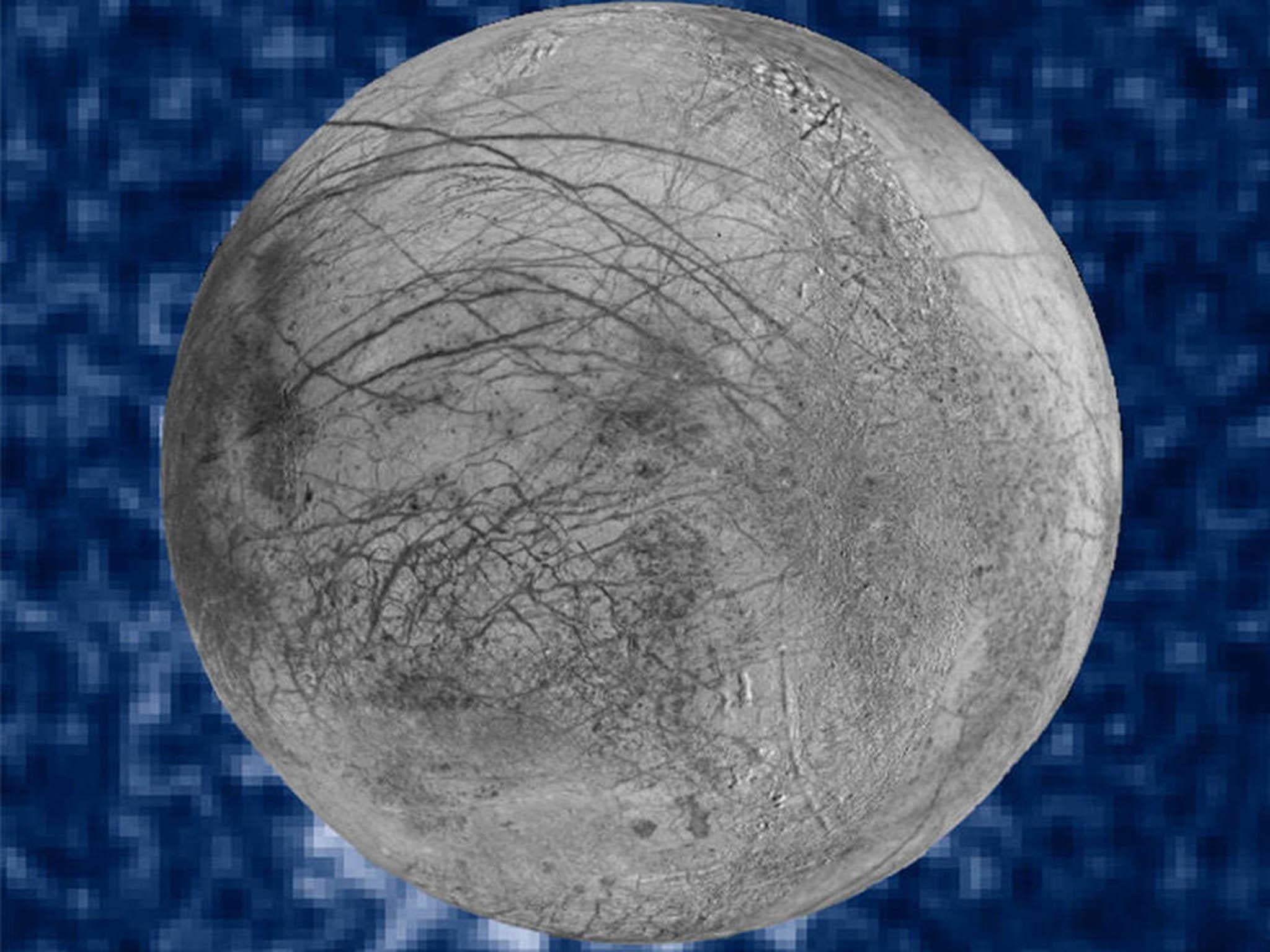Nasa could discover whether life exists outside of planet Earth within 20 years, scientist says
'For the first time in human history, we can actually build the missions that could go out and answer this fundamental question of whether or not biology works beyond Earth'

Scientists could discover whether life exists outside of planet Earth within the next 20 years, answering one of the most “fundamental questions” facing humanity, a senior Nasa official has said.
Dr Kevin Hand is one of the leading officials involved in the US space agency’s mission to Europa, a moon of Jupiter which has a vast ocean beneath a crust of ice that could potentially harbour extra-terrestrial life.
What he described as a “highly, highly capable scout mission” is due to be launched in 2024 or 2025.
It will be capable of spotting some of the tell-tale signs of life in the hostile environment of Europa's surface.
And, if it did do this, another more sophisticated craft could be sent, which might be able to climb down through cracks in the thick ice crust and the deploy an underwater robot into waters that could be teeming with life.
“For the first time in human history, we can actually build the missions and design the instruments that could go out and answer this fundamental question of whether or not biology works beyond Earth,” Dr Hand told the annual meeting of the American Association for the Advancement of Science’s annual meeting in Boston.
“If we commit to getting these missions done, we could potentially find life in our own solar system’s back yard within the next 20 years.
“Technologically it is entirely possible, but it require public support, excitement about this, so we look to you to help communicate and spread the word.
“One of my fundamental mantras, especially these days, is ‘less destroying, more exploring’ and I hope we can continue to do a lot more exploring.”
The Europa mission would perform multiple passes over the surface of the moon and then deploy a lander that would take various samples in an attempt to assess whether Europa has potential as a place where extra-terrestrial life could exist.
“The point of the mission that we designed was to be the right first mission, not the penultimate mission necessarily,” Dr Hand said.
“If we found signs of life on Europa’s surface, we’re going back, no questions asked.
“And we will send a much more capable spacecraft.”
To abide by international agreements, the lander would be fitted with a device designed to prevent any bacteria from Earth hitching a ride to Europa, potentially affecting the test results and perhaps even contaminating its own forms of life.
Dr John Rummel, a senior scientist at the Seti Institute in California, said it was important to “protect Europa for the Europans … not the Europeans”.
It would be "pretty easy" for bugs to survive space journeys as long as they were shielded from the sun's ultraviolet radiation, he said.
"Microbial life, as a whole, is pretty immune to cold, dry conditions," he said.
"Introduced to the intense radiation around Europa, exposed microbes should die off in hours to days to weeks, but organisms protected inside the spacecraft would still be alive as long as the silicon chips are functioning.”
Another significant concern is the potential for extra-terrestrial life to be brought back to Earth among any samples taken from other planets and moons.
But Dr Rummel expressed confidence that scientists would be able to keep anything harmful from spreading into the Earth’s natural environment.
"If we bring samples back from either Europa or Mars, we will contain them until hazard testing demonstrates that there is no danger and no life, or continue the containment indefinitely while we study the material,” he said.
"It is assumed that such life would be hardy — to survive the trip to Earth; not easy —and precautions taken would provide a very high degree of containment.”
Join our commenting forum
Join thought-provoking conversations, follow other Independent readers and see their replies
Comments